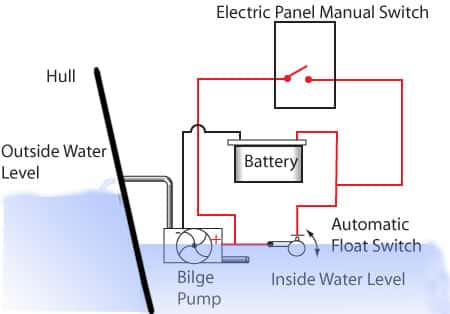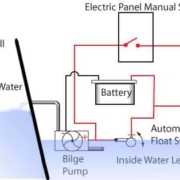Bilge Pumps on a Charter Boat
Boats have two types of pumps to empty bilge water; electronic and manually operated. The electronic pump is found in the main bilge area mounted above the water level and is activated by a float switch or a circuit breaker on the electrical panel. It is important that DC power is always “on” to the pump, which can’t operate without it. This should be the case whenever the battery isolation switch activates the house battery. An in-line filter removes matter from the water before it enters the pump. Water is drawn into an intake hose, passes through the filter, into the pump, and then out the boat via a thru-hull fitting.

Another hose in the bilge area will be found; this leads to the manual bilge pump. This pump actually removes more water from the bilge than most electronic pumps and is located in the cockpit. Some boats, especially those equipped for offshore sailing, have a second manual pump below decks. Locate the manual bilge pump(s), and also the handle used to operate it. The handle should have a string lanyard to prevent loss by dropping overboard.
When you arrive on your charter boat, it’s important that you check the operation of the bilge pump. Charter companies have to turn boats around fast to get them out again and things like this can be missed. Inspect the bilge area; water should be at low levels, with the float switch in the inactive position. Turn the pump on by elevating the float switch or the “Bilge Pump” circuit breaker and observe water entering the pump hose and leaving the boat via a through-hull fitting. If water does not flow, check the intake hose for obstructions at a screen or at the water filter. If these are unobstructed, debris probably interrupts a pump valve or the diaphragm, and the pump will require disassembly for inspection. Failure of the pump motor to activate indicates an electrical problem, and warrants contact with the charter company.





